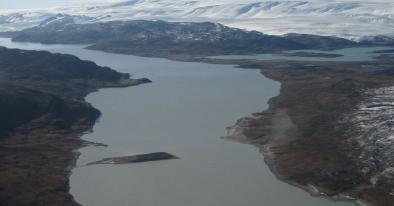Science Source
Contamination of the Arctic reflected in microbial metagenomes from the Greenland ice sheet
More attention needs to be paid to the potential release of anthropogenic contaminants in this fast-changing environment. As the ice sheets melt due to climate change, they have the potential not only to increase sea level, but also pollute the environment around them through the release of other anthropogenic pollutants that have accumulated in them.
Dr. Aviaja Hauptmann, from the University of Greenland, lead author
- States that climate change influences the release of globally emitted contaminants that accumulate in the Arctic and are stored in the frozen environments of the cryosphere through elevated melt rates, resulting in increased contamination locally
- Shows that microbial communities, sampled from multiple surface ice locations on the Greenland ice sheet, have the potential for resistance to and degradation of contaminants
- Finds the microbial potential to degrade anthropogenic contaminants, such as toxic and persistent polychlorinated biphenyls to be spatially variable and not limited to regions close to human activities
- Finds that binned genomes showed close resemblance to microorganisms isolated from contaminated habitats
- Results indicate that, from a microbiological perspective, the Greenland ice sheet cannot be seen as a pristine environment
Related Content
Science Source
| Geophysical Research Letters
Melting glaciers stimulate large summer phytoplankton blooms in southwest Greenland waters
Kevin R. Arrigo, Gert L. van Dijken, Renato M. Castelao et al
Science Source
| Geophysical Research Letters
Ice Core Records of West Greenland Melt and Climate Forcing
K. A. Graeter, E. C. Osterberg, D. G. Ferris et al
Science Source
| Science Advances
Abrupt shift in the observed runoff from the southwestern Greenland ice sheet
Andreas P. Ahlstrøm, Dorthe Petersen, Peter L. Langen et al
Headline

Dec 15, 2017 | Vox
Greenland's ice sheet is driving global sea level rise. One section is melting 80% faster.


